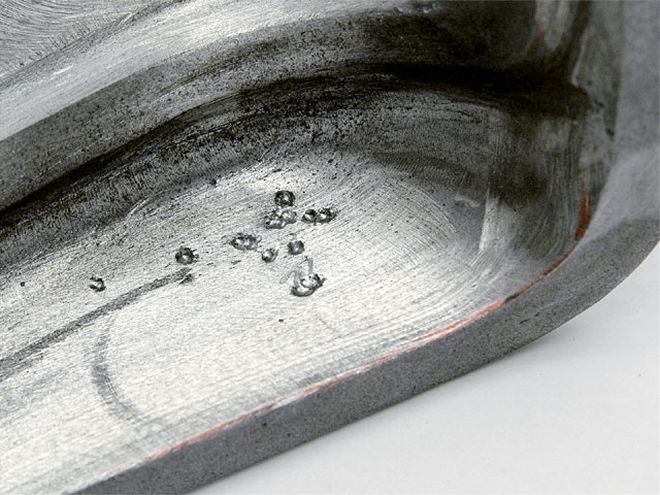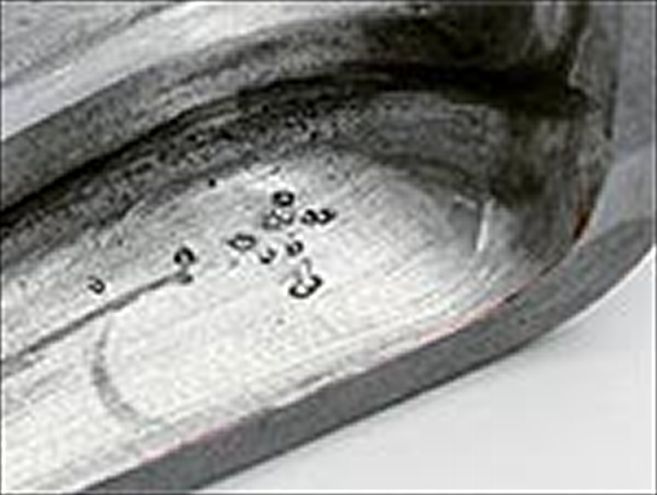


Mopar Muscle magazine is constantly on the lookout for new products and services that will make your Mopar go faster and/or look better. That's why when we got wind of the work coming out of Paul's Chrome Plating in Evans City, Pennsylvania, we decided to check it out for ourselves. Our rationale, besides wanting to get out from behind our desks, is that no matter how good your paint or how detailed your engine compartment is, if the bright work isn't up to par, you're going to lose some of that hard-earned respect. Even wheelstanding horsepower can only overcome so much before fingers start pointing at the details.
Owner Fred Hespenheide was really cool about taking us on a full-blown tour of his operation while explaining some of the secrets to show-quality trim restoration. We have to say this is not your average chrome shop. Show-quality work is all they do, and they do it all in-house. If you call to check on your order, they can tell you where each part is in the restoration process. While these guys can plate practically anything, including steel, brass, aluminum, stainless, pot metal, and even plastic and magnesium (perhaps the only shop anywhere that can show plate this highly reactive metal), we wanted to focus our attention on the sometimes seemingly impossible job of making pitted pot metal look like new again.
Pot metal cannot simply be buffed out or polished because corrosion has gotten under the chrome finish and eaten away at the base metal.To restore pot metal, all of the plating must be removed from the part before the corrosion can be removed from all the little pits. Then, the pits can be filled, and the part replated to look like new. It would be helpful to understand that chrome plating is actually a three-part process. (this is where the term "triple chrome plated" comes from.) First, the part is copper plated because copper sticks to most anything, and the second part, nickel, which is the metal that gives plated parts their silver-like look, adheres well to a copper base. The third step is the actual chrome layer that is really more like a clearcoat that keeps the nickel from tarnishing. The real advantage that Paul's Plating has is, if a flaw is found anywhere during the restoration process, they can strip everything off and start over again.
The outline of the basic process goes like this. First, the part is chemically cleaned and reverse plated to remove the old chrome and nickel layers. Since the copper layer cannot be electro-chemically removed, it has to be physically removed by hand. Fortunately, the factory coating isn't very thick. Now each pit has to be drilled out by hand to remove all of the corrosion. The tiniest speck of corrosion left behind can produce a flaw in the final finish. The part is now fine sanded to ensure all the critical surfaces are clean and smooth.
A layer of copper then needs to be applied before any pit repair can begin. Each pit is filled with solder much like plumbing pipes are sweat-fitted together. By heating the part in the area of damage, solder is drawn to the bottom of each pit ensuring complete filling and a solid bond. Once all the damage is repaired, the part is sanded smooth to remove any excess solder and is again dipped in the copper tank. This copper layer is then polished to a mirror-like finish. This is a critical step, as any flaw left in the surface will only be magnified by the next steps.
Next comes the nickel tank. Nickel plating is really what gives a chrome-plated part its silvery color. When a part comes out of the nickel tank, it looks like it has already been chromed. It's bright and shiny, and it looks great. The problem with nickel is it tarnishes very quickly, so that's why the chrome is necessary. The chrome layer is actually very thin, but also very hard and nearly clear.
Because each part is literally hand repaired and individually monitored throughout the entire restoration process, repaired pot-metal parts should last for life, and Paul's Plating guarantees they will. Factory pieces were chromed en masse, and as quickly and inexpensively as possible. These guys are striving for quality, not speed, and the results of their work speak for themselves.
Stainless Trim Repair
Not all your trim parts need to be rechromed. Many Mopar trim parts are made from stainless steel-and while they'll look beautiful if you do chrome them-if you're doing a pure restoration, it requires they remain unplated.
Paul's Plating may be best known for their chrome plating expertise, but they are also equally adept at stainless and aluminum trim restoration. They are the kind of shop you can send all of your bright parts to for repair. Repairing a dent in stainless is like pounding out a dent in body panel, but then not being able to use any body filler before you paint. All of the work has to be done in the metal. Fortunately, stainless is a fairly malleable metal that polishes well. Still, there is not a lot of material to work with-this is especially true of the later model stuff-so don't trust your rare and valuable pieces to someone without a lot of experience doing this type of work.
Chroming Plastic
You've got all your exterior trim parts looking bright and shiny, and the metal interior trim components have a fresh chrome plating, but what about those plastic parts that have their chrome flaking off? What can be done with them? The used ones you might find pretty much all look the same as yours already do. Sorry to say, but the factory plastic plating is even worse than on the metal parts. It's not very thick, and it doesn't stick well.
Fred and his team have spent a lot of time and effort developing a system that will allow their plastic plating to last indefinitely. While we were allowed to see the basic steps, Fred is keeping his proprietary processes a secret. (We figure he thinks us magazine types might tell everyone how he does it.) The basic difficulty in plating anything nonconductive is to somehow make it conduct electricity. You can't electroplate something unless you can get an electrical current to flow through it. The solution is to spray each piece with a special paint that contains a very high level of real silver that, once dry, will flow an electric current. It's nowhere near as conductive as a metal part, so the plating can take a lot longer, but once a good layer of copper plating is applied, the rest of the steps are just like any other plating job. The result is a chrome finish that is far superior to the original plating.